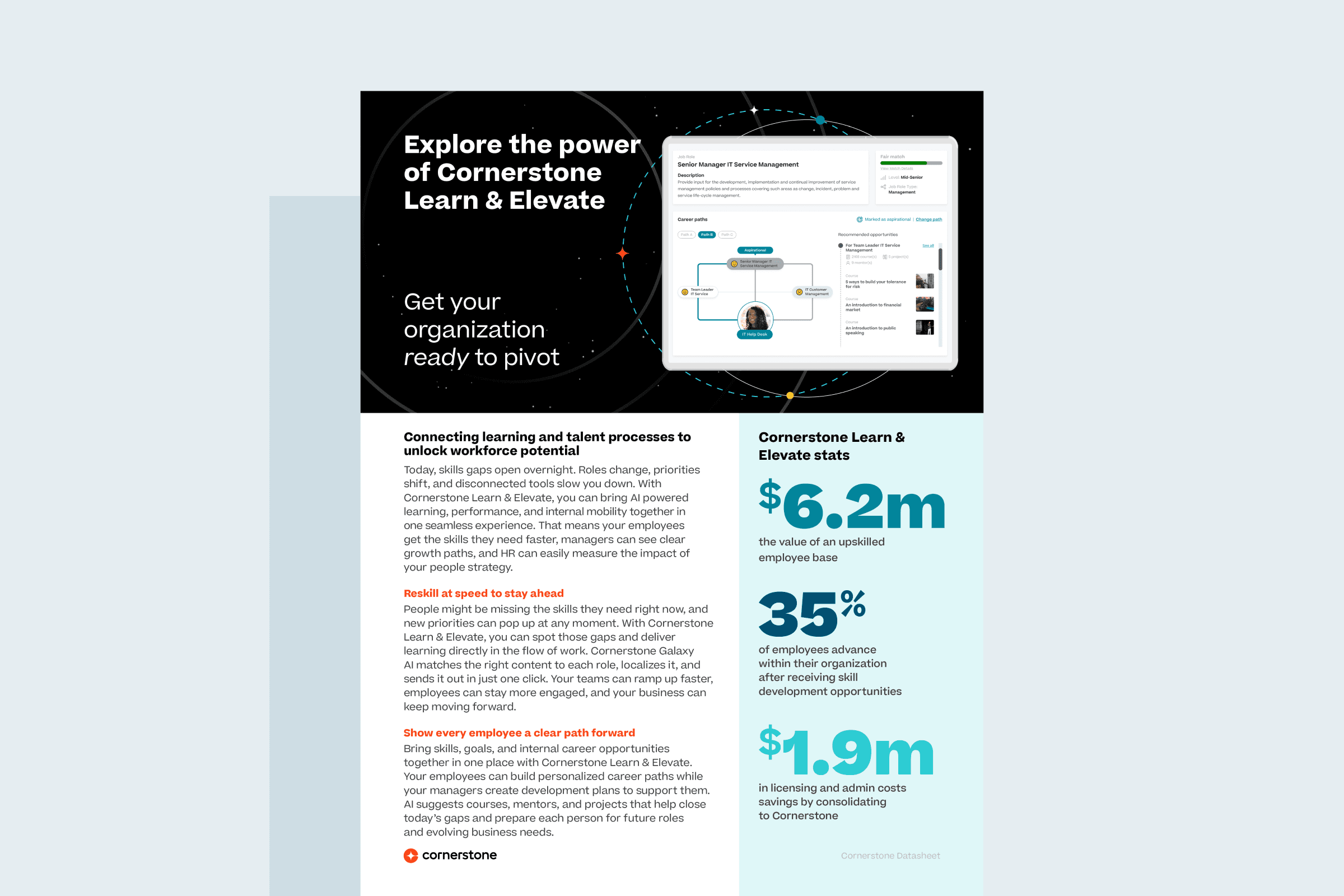The future of work is here. How will your manufacturing company keep up?
Whether you realise it or not, your manufacturing company is now a tech company.
It doesn’t matter if you manufacture cars, electronics, consumables, chemicals or metals - if you haven’t already adopted and embraced the mindset of a tech company, you risk being left behind by your competitors.
As such, it’s never been more important to have skilled workers who can leverage the technology required to put you at the forefront of your industry.
But here’s the catch. With companies around the world all coming to this realisation at the same time, a skills gap is emerging - and it’s widening by the day.
According to the IDC, a strong increase in demand for data professionals resulted in approximately 571,000 positions going unfilled in 2018 - a 10 per cent increase in that segment’s skills gap.
The simple fact of the matter is that there’s an insatiable appetite for people with skills, and fewer jobs available for people without skills.
What’s driving this skills gap?
For many industries, the skills gap has been brought on by the 4th industrial revolution – aka Industry 4.0 (I4) – which involves disruptive technologies and trends changing the way we live and work. For manufacturers, I4 is seen in smart manufacturing, smart factories, lights out manufacturing, and the Industrial IoT.
These technologies are rapidly evolving, and herein lies the problem: technology is outpacing human adoption.
This, coupled with the struggle to acquire and retain talent, is a key reason companies are struggling to navigate the skills gap.
People vs systems
One of the biggest strategic errors companies are making today is thinking they can keep pace with I4 using technology alone.
But consider this: PwC's 22nd Annual Global CEO Survey, ranks ‘speed of technological change’ as just the 9th most concerning threat facing CEOs. That puts it well behind the 3rd-placed ‘availability of key skills’.
What this says to me is that too many companies are not helping their people keep up with change. We have become better at retooling our processes and systems than we have our employees.
As such, it’s important to ensure you’re continuously providing employees with learning and development opportunities so that they can leverage technology for you.
If done well, the benefits are two-fold.
The first benefit is that you’ll be training your own high-potential employees to fill the skills gap. In turn, that reduces the need to recruit external talent - which is often be hard to do.
The second benefit is you’ll improve your company’s retention rate.
Indeed, the number one reason people quit their jobs, according to the 2019 Deloitte Global Human Capital Trends report, is the “inability to learn and grow”.
And when you consider that every time a competitor lures away one of your high-performing employees it costs up to 200 per cent of that employee’s annual salary to replace them, it’s critical you help your employees advance their careers internally.
Continually develop your employees
The good news is there’s a straight-forward fix when it comes to retaining employees and closing the skills gap: continuous employee development.
Long gone are the days when an apprentice learnt a skill once that would set them up for life. The skills required for today’s manufacturing workforce are changing on a monthly basis and you need to equip your employees with up-to-date training modules that help them keep pace.
If you take a look at your training programs, can you honestly say your employees spend enough time learning to keep up?
Probably not. Because, on average, employees spend just 26 hours annually on training.
When you consider that the average 15-year-old Netherlands school student spends just as much time on their homework in one month, it’s no wonder the skills gap is widening at an alarming rate.
But you can’t just click your fingers and make your employees ‘learn’. Just as personal technology apps now integrate seamlessly with your life, so too should training modules become frictionless and personalised for your employees.
You have to deliver software in a way that you go to your employees: where they’re working, in the flow of their work.
Because learning is no longer a luxury for your employees, it's a requirement.
The good news is, though, that by continuously developing your employees not only will they be happier, more confident, and more productive, but your organisation will be embracing disruption like a tech company and better equipped to tackle the skills gap challenges of I4.


